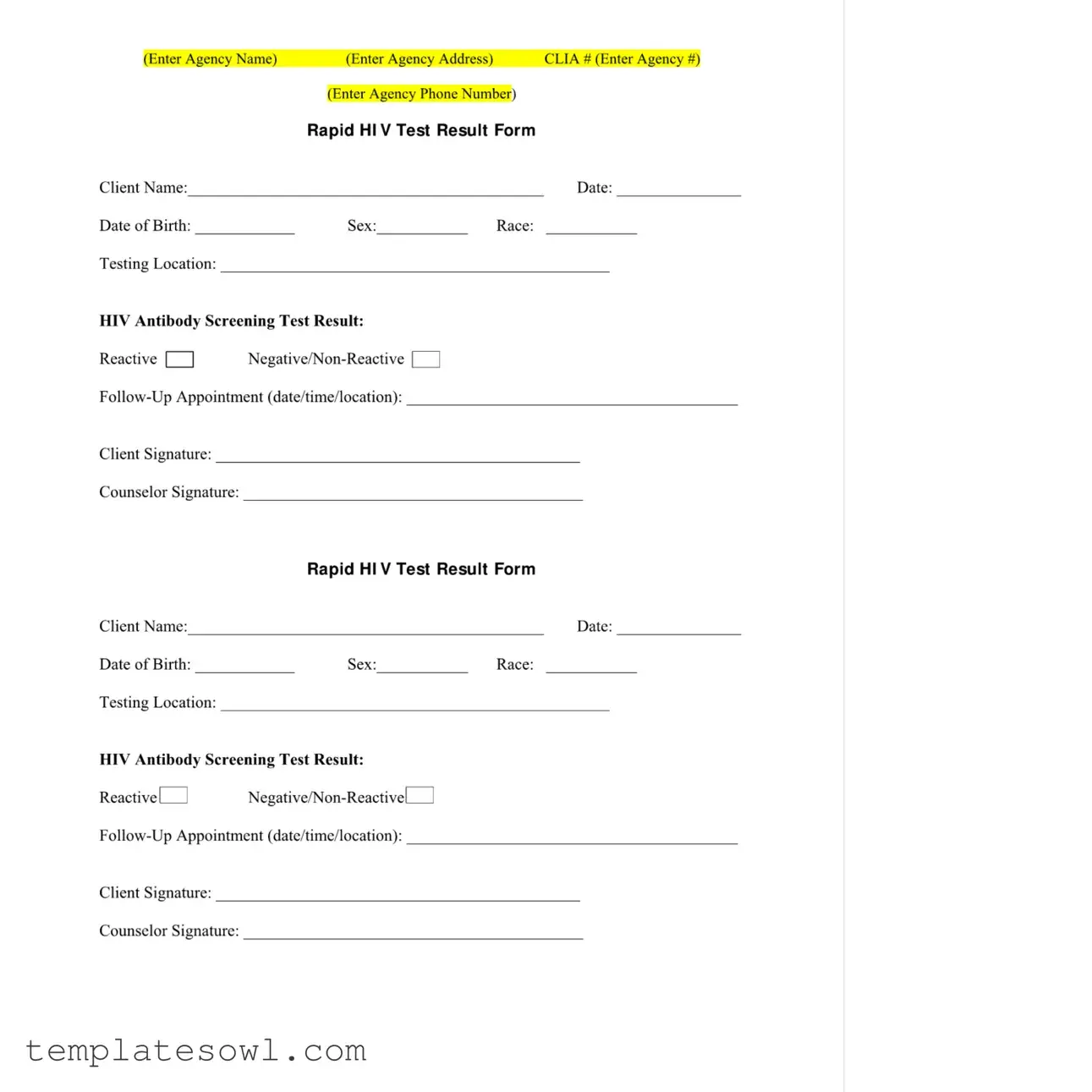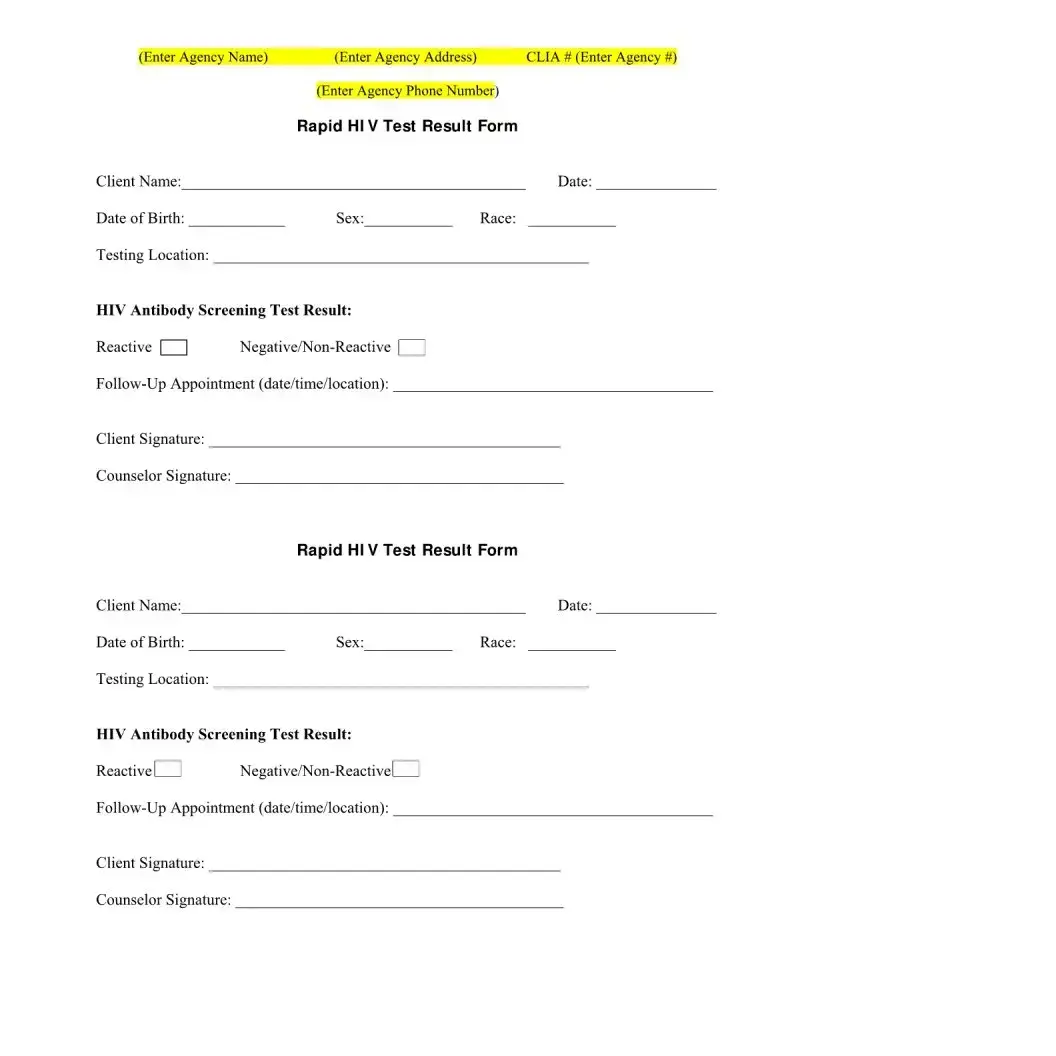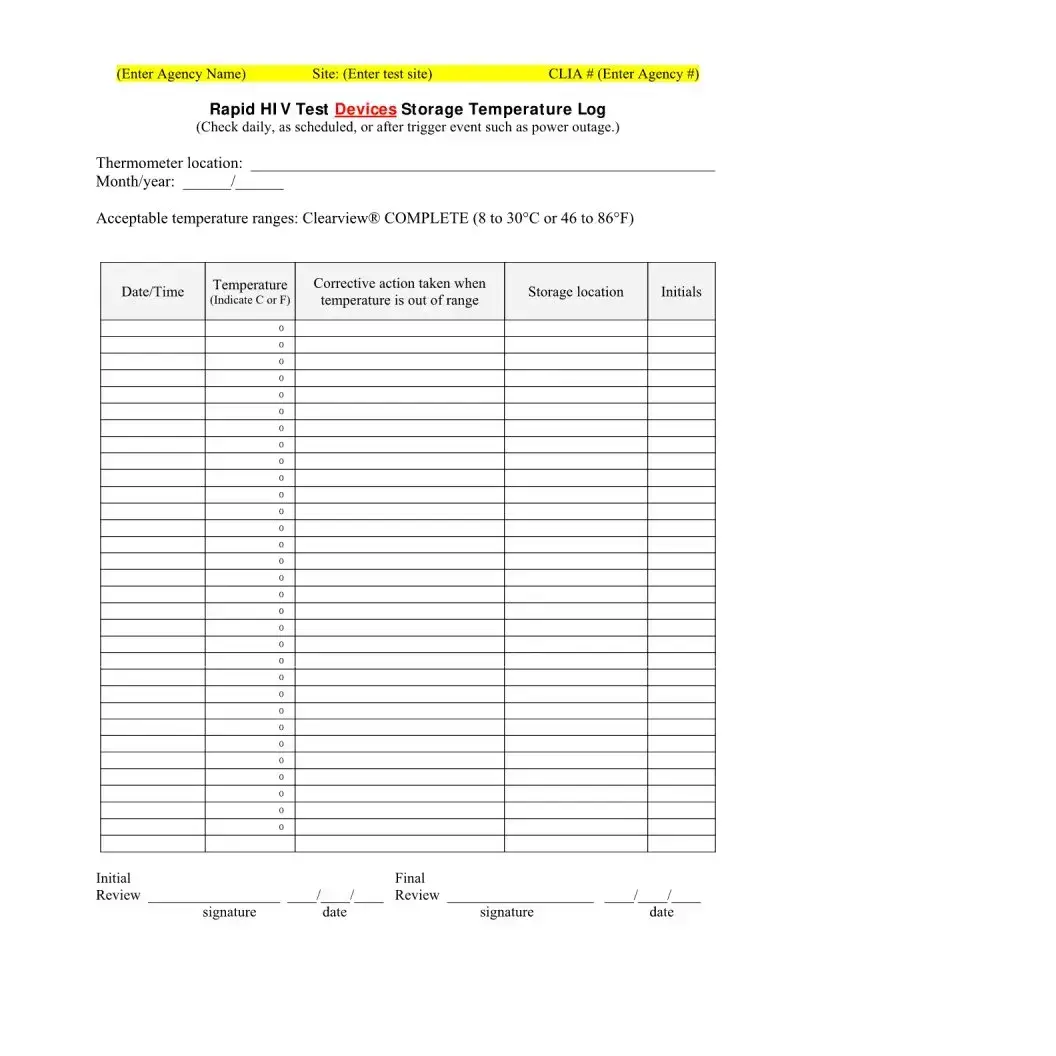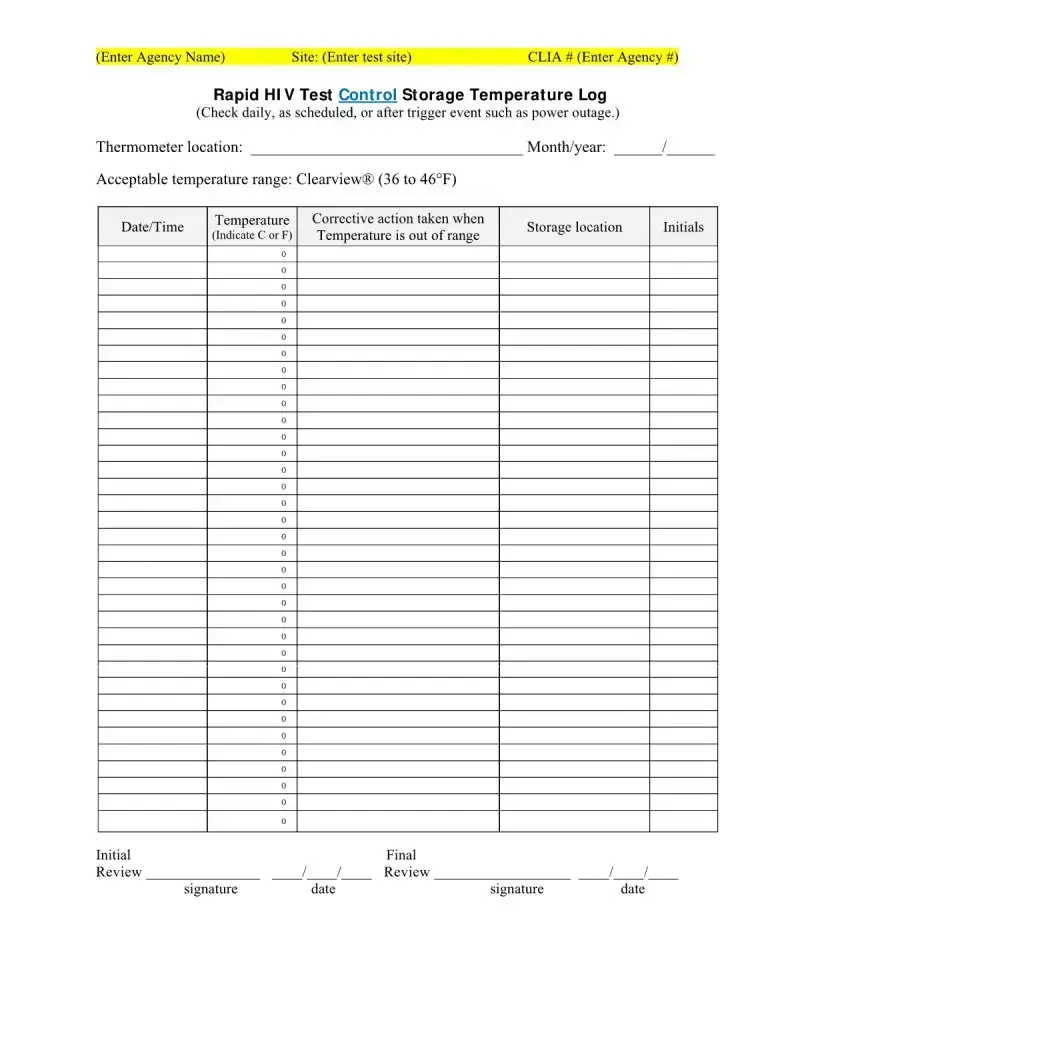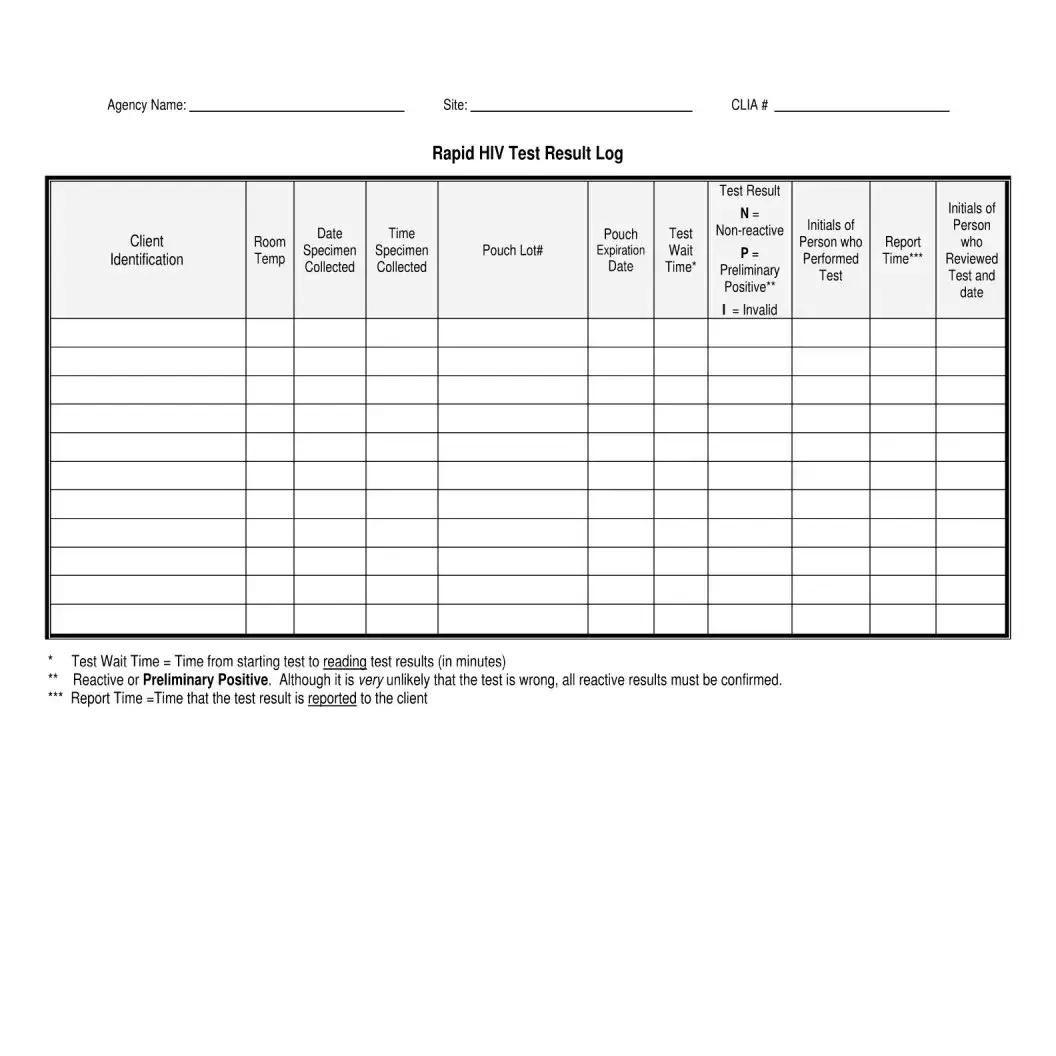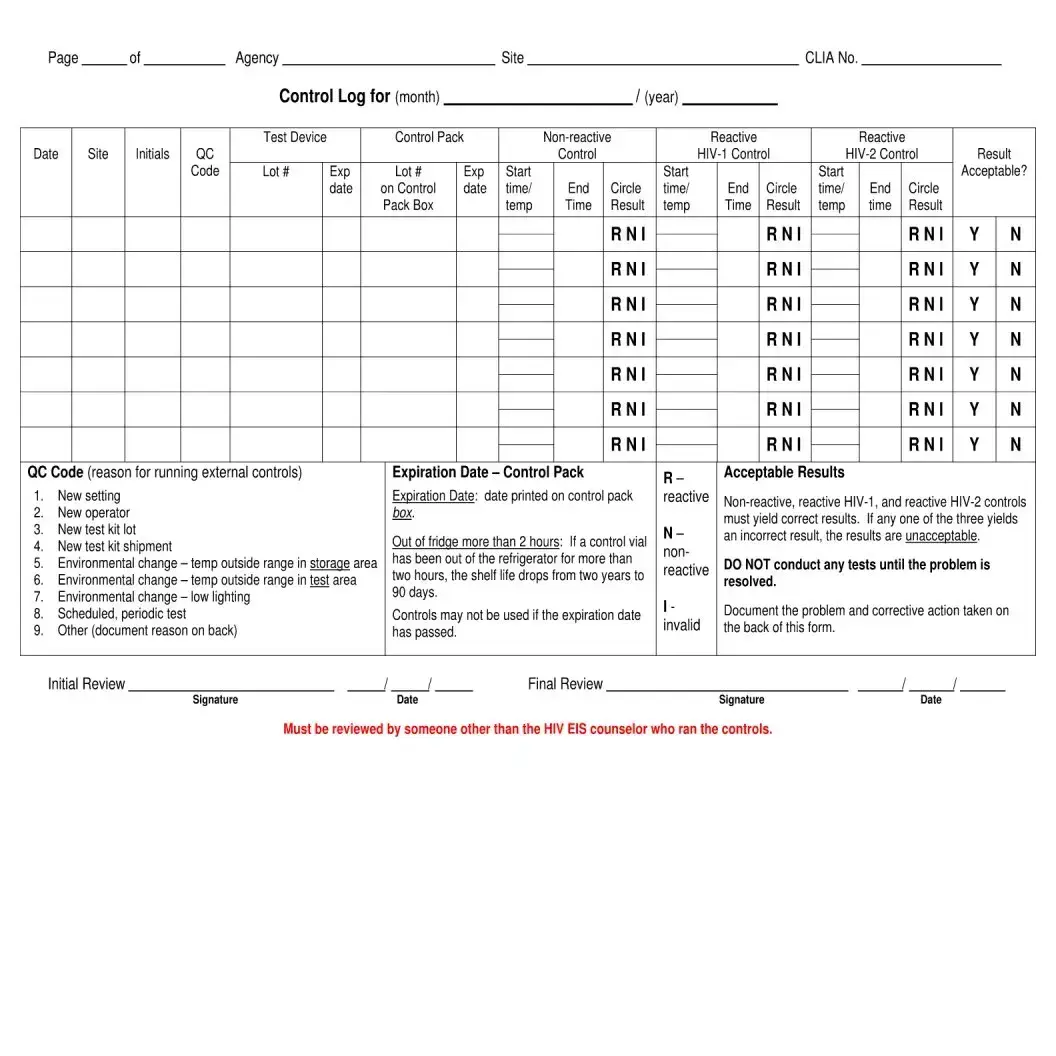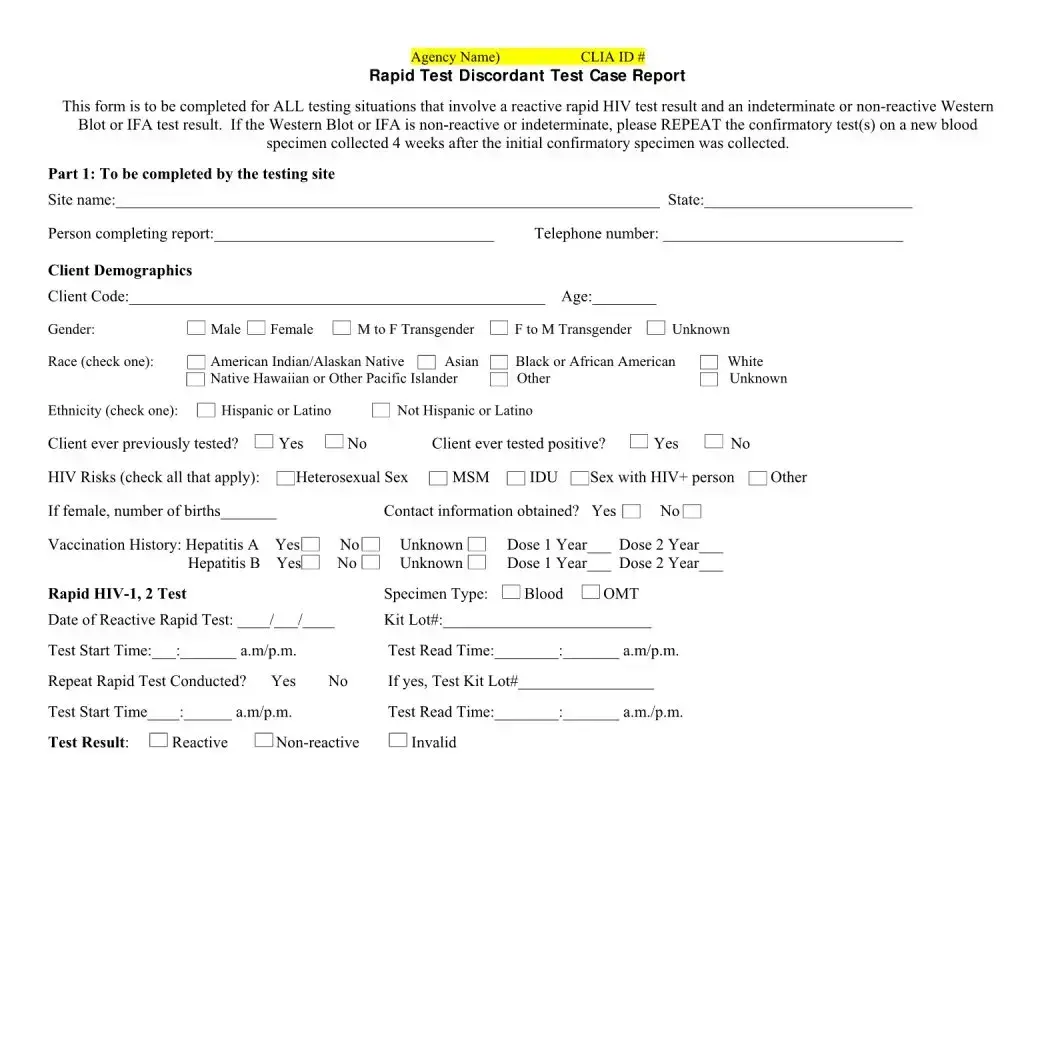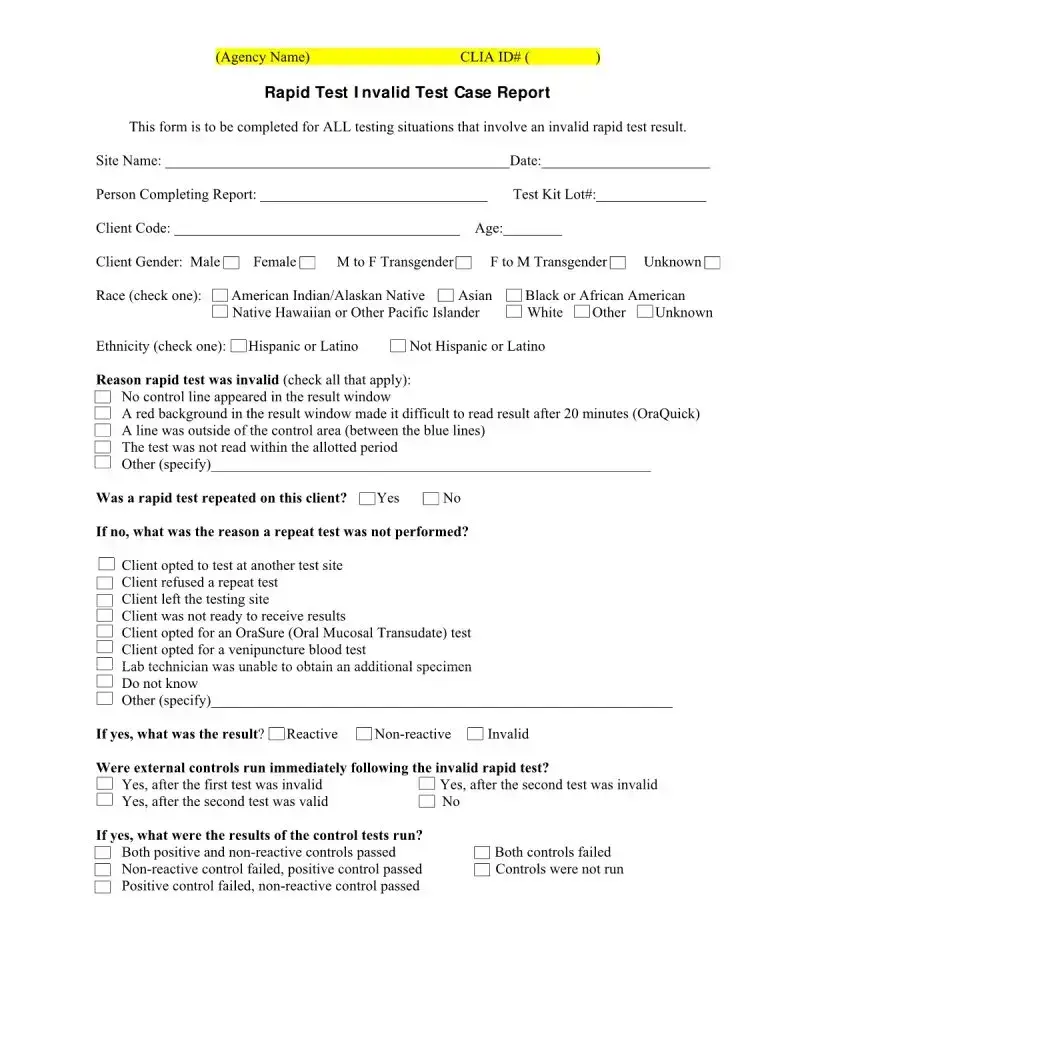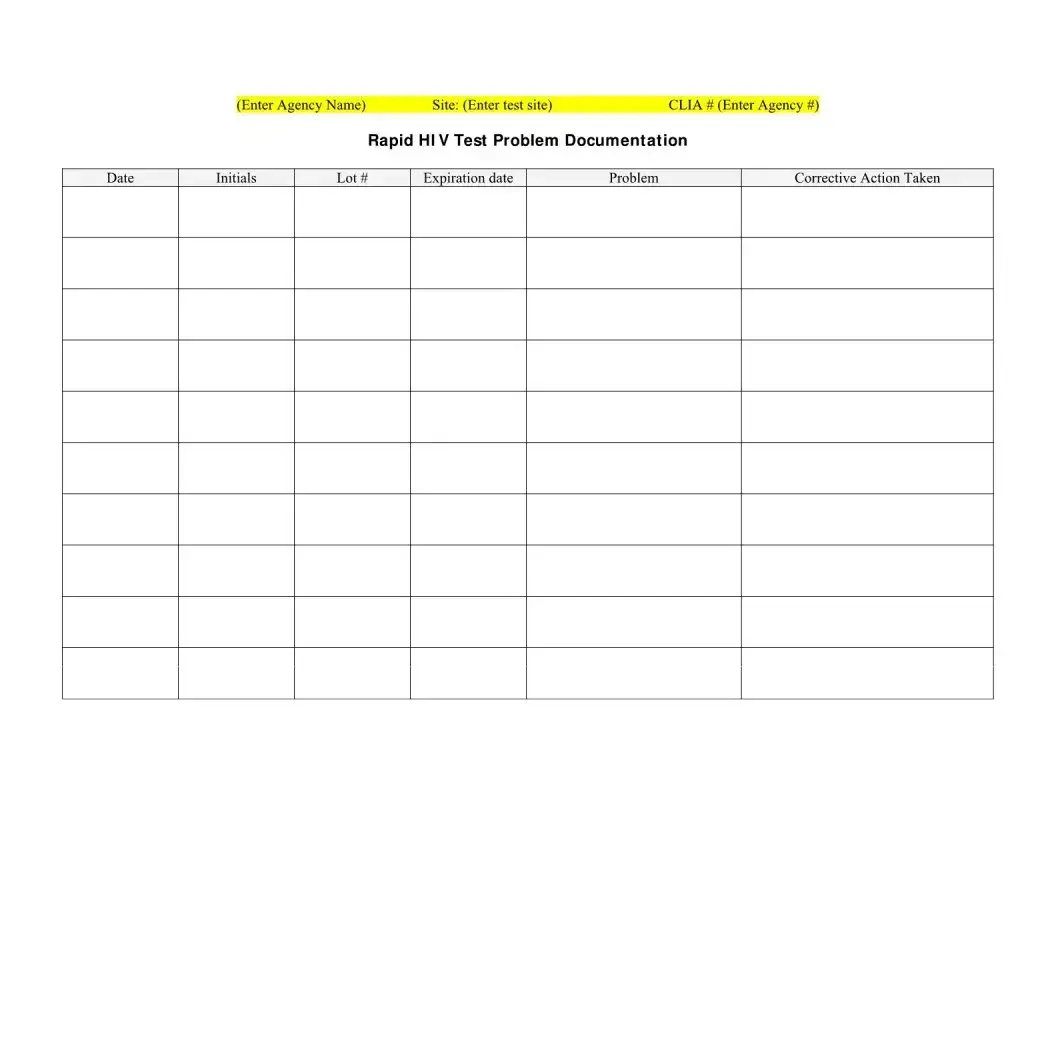What is the purpose of the Negative HIV Test form?
The Negative HIV Test form serves as official documentation of an individual's negative result from an HIV antibody screening test. It is used by healthcare providers to ensure that clients have a clear understanding of their HIV status and can help track follow-up appointments if needed.
What information is included on the form?
The form captures essential information such as the client's name, date of birth, race, testing location, and the HIV antibody screening test result. Additionally, it includes areas for client and counselor signatures, as well as details regarding follow-up appointments.
What does a 'Negative/Non-Reactive' result mean?
A 'Negative/Non-Reactive' result indicates that no HIV antibodies were detected in the individual's blood sample at the time of testing. This suggests that the person does not have an HIV infection. However, it's important to note that testing should be done in accordance with recommended guidelines to ensure accuracy.
Are there any next steps after receiving a negative result?
If an individual receives a negative result, they are typically advised to continue regular testing based on their risk factors and personal health considerations. Follow-up appointments may also be scheduled as a precaution, especially if there is potential exposure.
How is the confidentiality of test results maintained?
Confidentiality is a key priority in administering HIV tests. Personal information, including test results, is shared only with the authorized personnel involved in the client's care. Facilities typically adhere to HIPAA regulations to protect client privacy.
What should I do if I disagree with the test result?
If there is any disagreement with the test result, individuals are encouraged to discuss their concerns with their healthcare provider or counselor. They may recommend additional testing or counseling to resolve any uncertainties regarding the results.
What is the significance of the client and counselor signatures on the form?
Client and counselor signatures are important as they confirm that the results have been communicated and understood. The signatures signify consent for the test and acknowledgment of the results, which can also serve as a legal record if necessary.
How often should someone get tested for HIV?
Testing frequency can vary based on individual risk factors. Generally, health experts recommend that sexually active individuals be tested at least once a year. Those at higher risk may need to be tested more frequently. Consulting with a healthcare provider can provide tailored recommendations.
